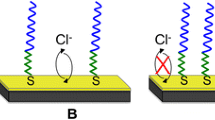Abstract
Tuberculosis is a contagious disease caused by the bacteria, Mycobacterium Tuberculosis. Early detection of TB is vital to increase the chances of cure. In this paper, a MEMS cantilever based biosensor is designed and analyzed for the detection of TB antigen. The surface of the cantilever is coated with the TB antibody (ESAT-6). Since antibodies are disease specific, the presence of TB antigen in given patient sample is identified through the deflection of the cantilever beam. The analysis of the structure was performed by varying the length and width of the cantilever, material of the cantilever and shapes of the cantilever in order to obtain the maximum amount of deflection and sensitivity. The various cantilever types were simulated and the results were used to analyze the performance based on material and design. Stress concentrating region (SCR) designs have been included in the simulations so as to analyze the cantilever performances with these additional features. Also, in this work, the materials analyzed were aluminium, gold, platinum, polyimide and polysilicon. This method of detection was found to be simpler, less time consuming and more cost effective as compared to traditional TB detection methods like ELISA and IGRAs.






















Similar content being viewed by others
References
Chithra SP, Prince AA (2013) RF MEMS-based biosensor for pathogenic bacteria detection. BioNanoSci. 3:321–328
Dhakane S, Patil WV (2014) Piezo-resistive method for tuberculosis detection using microcantilever biosensor. Microsyst Technol 20(3):457–462
Fritz J (2008) Cantilever biosensors. Analyst 133(7):855–863
Ghosh Dastider S, Abdullah A, Jasim I, Yuksek NS, Dweik M, Almasri M (2018) Low concentration E. coli O157:H7 bacteria sensing using microfluidic MEMS biosensor. Rev Sci Instrum 89:125009
Haag A, Nagai Y, Lennox RB et al (2015) Characterization of a gold coated cantilever surface for biosensing applications. EPJ Techn Instrum 2:1
Karayil N, Suja KJ (2017) Performance analysis of MEMS piezoresistive cantilever based sensor for tuberculosis detection using coventorware FEA. Int J Mech Eng Robot Res 6:301–304
McGovern JP, Shih WY, Shih WH (2007) In situ detection of Bacillus anthracis spores using fully submersible, self-exciting, self-sensing PMN-PT/Sn piezoelectric microcantilevers. Analyst 132(8):777–783
Mondal S, Arya D, Ansari MZ (2018) High sensitive MEMS piezoresistive microcantilever sensor. Proc Comput Sci 133:793–798
Murthy KSN, Prasad GRK, Saikiran NLNV, Manoj TVS (2016) Design and simulation of MEMS biosensor for the detection of tuberculosis. Indian J Sci Technol 9:31
Poulsen C, Panjikar S, Holton SJ, Wilmanns M, Song YH (2014) WXG100 protein superfamily consists of three subfamilies and exhibits an α-helical C-terminal conserved residue pattern. PLoS ONE 9(2):89313
Rahul J, Kumar R (2019) Micro-cantilevered MEMS biosensor for detection of malaria protozoan parasites. J Comput Appl Mech 50(1):99–107
Saeed MA, Khan SM, Ahmed N, Khan MU, Rehman A (2016) Design and analysis of capacitance based Bio-MEMS cantilever sensor for tuberculosis detection. In: 2016 international conference on intelligent systems engineering (ICISE), pp 175–180. IEEE
Sajan P (2017) Modeling and simulation of micro cantilever based tuberculosis detection sensor (5th ed., Rep.). Int J Electron Electric Comput Syst 6:417–420
Serene IM, Rajasekharababu M, Alex ZC (2018) A study and analysis of microcantilever materials for disease detection. Mater Today Proc 5.1:1219–1225
Author information
Authors and Affiliations
Corresponding author
Additional information
Publisher's Note
Springer Nature remains neutral with regard to jurisdictional claims in published maps and institutional affiliations.
Rights and permissions
About this article
Cite this article
Lakshmi, S., Almeida, A., Bagchi, A. et al. Detection of tuberculosis using MEMS. Microsyst Technol 27, 87–95 (2021). https://doi.org/10.1007/s00542-020-04918-2
Received:
Accepted:
Published:
Issue Date:
DOI: https://doi.org/10.1007/s00542-020-04918-2




